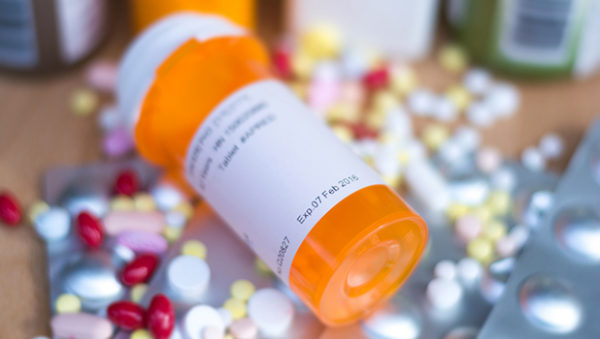**This is a synopsis of an article published in NPR’s Shots and ProPublica.
DISCLAIMER: Please consult with your physician before taking any expired medications.
Lee Cantrell, a toxicologist who helps run the California Poison Control System, and Roy Gerona, a pharmacist, and researcher at the University of California, San Francisco who specializes in analyzing chemicals, teamed up to answer the question: What is the actual shelf life of drugs?
Pharmacies and medical centers throw out $800 million per year of expired prescription drugs, but is that necessary?
The dates on drug labels are simply the point up to which the Food and Drug Administration and pharmaceutical companies guarantee their effectiveness, typically at two or three years. But the dates don’t necessarily mean they’re ineffective immediately after they “expire” — just that there’s no incentive for drug makers to study whether they could still be usable.
In his lab, Gerona ran tests on decades-old drugs: antihistamines, pain relievers, stimulants, and some inactive diet pills (Obocell and Bamadex). The drugs were tested from their original sealed packaging.
The findings were astounding: 12 of the 14 compounds had maintained the same potency as when they were manufactured.
Cantrell and Gerona published their findings in Archives of Internal Medicine in 2012. They were accused of advising patients that it was ok to take expired drugs. The researchers state that they were reviewing the ways the dates are determined and suggest re-examining the prescription drug dating process, which could save billions of dollars.
A 2006 study published in the Journal of Pharmaceutical Sciences tested 122 drugs. The researchers found that two-thirds of the expired prescriptions were stable and offered an extended shelf life by more than four years. However, some medications failed to maintain their effectiveness. Among them, the asthma inhalant albuterol, the topical rash spray diphenhydramine, and a local anesthetic made from lidocaine and epinephrine.
According to the authors, the federal government is aware of the extended shelf life of some drugs, stockpiling medications, antidotes, and vaccinations in secured locations around the country in case of emergency. The military, CDC and U.S. Department of Veterans Affairs are among the federal agencies that stockpile.
In 1986, the Air Force, hoping to save on replacement costs, asked the FDA if certain drugs’ expiration dates could be extended. In response, the FDA and Defense Department created the Shelf Life Extension Program. Each year, drugs from the stockpiles are selected based on their value and pending expiration, and analyzed in batches to determine whether their end-dates could be safely extended. For several decades, the program has found that the actual shelf life of many drugs is well beyond the original expiration dates.
The Department of Defense has a stockpile of $13.6 billion worth of drugs. In 2016, it costs $3.1 million to run the extension program, which saves the department $2.1 billion in replacing expired drugs.
How does the drug dating process work?
50 years ago, the FDA began requiring manufacturers to add expiration dates to their packaging in order to ensure medications are safe and effective. To determine a drug’s shelf life, the maker of the drug applies extreme heat and high levels of moisture to the drug, observing how it responds and breaks down over time. The drug companies then propose an expiration date to the FDA, which reviews the data and then approves it. Most drugs, despite their different make-ups, expire after two to three years.
After the launch, the drug goes through another round of testing to make sure the expiration date is accurate, but rarely do drug makers test after the expiration date because of the expense and time associated with additional testing. They also increase their sales by honoring the preliminary expiration dates and not investigating further.
It’s a known secret among medical professionals that many drugs maintain their effectiveness well after the expiration date. And, some medical providers have tried to elicit change. In 2000, the American Medical Association (AMA) cited the federal extension program and sent letters to the FDA, the U.S. Pharmacopeial Convention and PhRMA asking for a “re-examination of expiration dates.” The AMA wrote, “The shelf life of many drugs, seems to be considerably longer than their expiration dates, leading to unnecessary waste, higher pharmaceutical costs, and possibly reduced access to necessary drugs for some patients.”
Nothing came of the AMA’s call to action.
Unfortunately, pharmacists’ hands are tied; federal and state laws prohibit pharmacists from dispensing expired drugs, and The Joint Commission, which accredits thousands of health care organizations, requires facilities to remove expired medication from their supply. Yet, the proof remains:
In May, Cantrell and Gerona published a study that examined 40 EpiPens and EpiPen Jrs., a smaller version, that had been expired for between one and 50 months. The devices had been donated by consumers, which meant they could have been stored in conditions that would cause them to break down, like a car’s glove box or a steamy bathroom. The EpiPens also contain liquid medicine, which tends to be less stable than solid medications.Testing showed 24 of the 40 expired devices contained at least 90 percent of their stated amount of epinephrine, enough to be considered as potent as when they were made. All of them contained at least 80 percent of their labeled concentration of medication. The takeaway? Even EpiPens stored in less than ideal conditions may last longer than their labels say they do, and if there’s no other option, an expired EpiPen may be better than nothing, Cantrell says.
Occasionally, a pharmaceutical company will extend the expiration dates of its products when there’s a shortage, i.e., when the FDA posted extended expiration dates from Pfizer for batches of its injectable atropine, dextrose, epinephrine, and sodium bicarbonate. The agency added six months to a year to their expiration dates.
A former FDA scientist, Ajaz Hussain says, “The FDA will have to take the lead for a solution to emerge…We are throwing away products that are certainly stable, and we need to do something about it.”
Read the full article here.
About 4C Medical Group
 4C Medical Group is a primary care driven integrated healthcare delivery network in the Phoenix, Arizona market. Our network provides care to patients in acute, post-acute, specialty care, wellness, medicare advantage, and virtual appointments.
4C Medical Group is a primary care driven integrated healthcare delivery network in the Phoenix, Arizona market. Our network provides care to patients in acute, post-acute, specialty care, wellness, medicare advantage, and virtual appointments.
With over 12 locations throughout Phoenix, our patients can easily find a location near them. Discover more about 4C Medical Group and our network of physicians.
Comments are closed.



